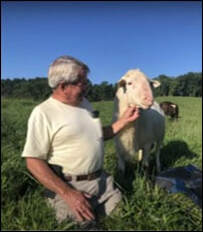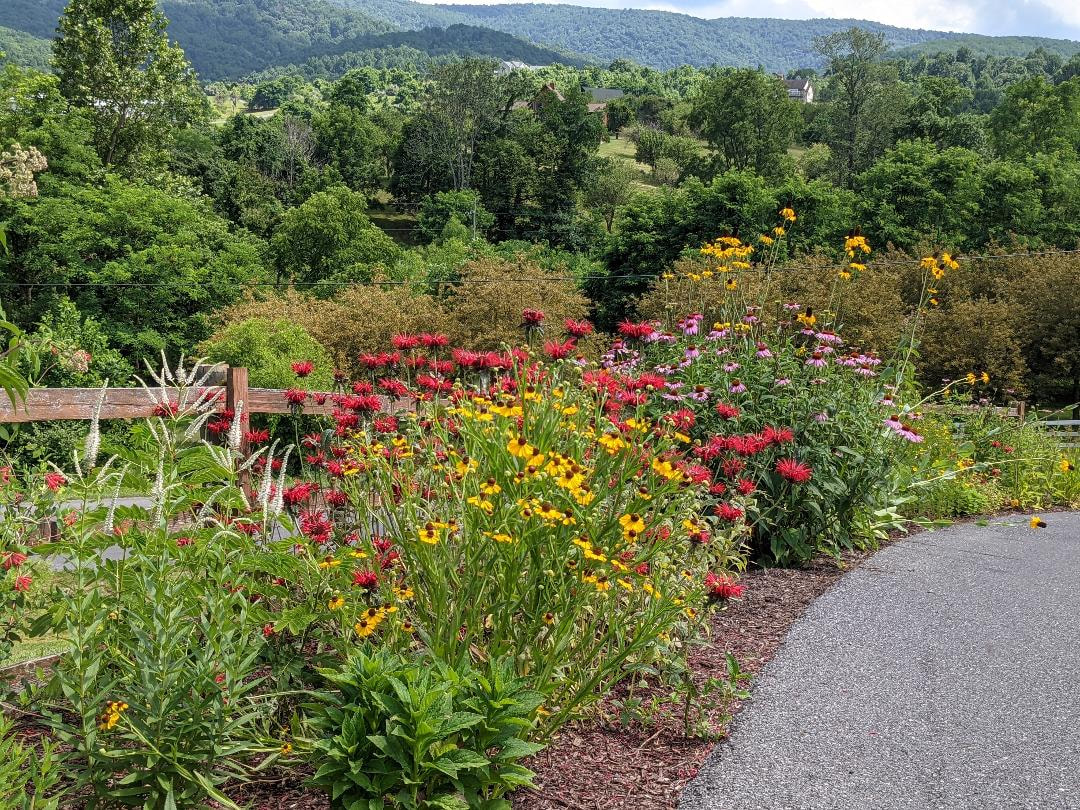 Paul Guay was born in Washington DC and grew up in Hyattsville, Maryland. His family moved to Sterling Park, Virginia in 1962 and he has been a Virginia resident ever since. Paul attended George Mason University, married, and had several children. Family responsibilities meant he needed a “real job” so he left the university and was employed as a toxicology laboratory clinician and later as a clinical chemistry technician. Chemical analysis at that time was performed manually and, as he explained, “You had to know something about chemistry in order to do your job.” He later was employed by the U.S. Postal Service and delivered mail for 32 years until he retired in 2006. During these years Paul became fascinated with landscape design and installation. On a volunteer basis, he designed and installed a pollinator garden in Evitts Run Park in Charles Town, West Virginia. The planting included trees, shrubs, and flowers native to the Chesapeake Bay watershed. He also worked with Charles Town’s Planning Commission and Parks and Recreation Department to design and install an extensive “walk-through” garden of exotic trees and shrubs at Jefferson County Memorial Park in Charles Town. This 2 yearlong project was paid for by a $10,000 grant from the Charles Town Rotary Club. In 2019 Paul installed a conservation garden for a client near Front Royal, Virginia. This involved dealing with a 15-degree slope, a swale to control erosion, and native plants that would be the best fit for this challenging terrain. This project was funded by a competitive grant from the Lord Fairfax Soil and Water Conservation District and recently won their 2022 “District Urban Conservation Award”. Another project, which took 1-1/2 years to complete, was located in Winchester at the Museum of the Shenandoah Valley. He identified, catalogued, and photographed all of the 48 tree and shrub species found along the extensive network of hiking trails on the Museum’s grounds and compiled the results into a booklet. A copy now resides in the Museum’s Educators Library.
What is the most amazing thing you have experienced in nature?
Paul deeply appreciates Canada’s natural parks, both for their spectacular scenery as well as how they have made their parks accessible to all. He described trails, waterfalls, and glacier lakes that offered mobility-challenged individuals the ability to experience these works of nature. “You don’t see that extent of focus on accessibility in many national parks in our country,” he noted. He described some of the natural wonders in Canada, including the ice fields at Banff, and Jasper National Parks, the glacial lakes, and Bridal Veil Falls with a free-fall of 1,200 feet. “And these are all accessible to anyone who loves the natural world.” Describe what you do on your own property to support a healthy ecosystem. Paul and his wife have a small 4-½ acre farm in Clark County that is surrounded by horse farms and crop land. Their land abuts a 300-acre farm that is in a permanent conservation easement. He has seen bears, coyotes, turkeys, rabbits and other animals that are supported by this natural habitat. Paul has maintained an old 1900 tenant house on his land and established a pollinator garden around it that also supports wildlife. What is something you would like to share with ORMN members? Paul has self-published a number of books – both paperback and electronic – that focus on the detail in nature that is often overlooked. He takes close-up photos with a digital microscope and pairs these pictures with the history of who named specific birds, insects, plants and other things in nature – and upon what those scientific names are based. He has shared his photos with many individuals and groups including children from 10 years old to a number of women’s garden clubs through the area. “Children find this focus on the smallest aspects of a plant to be fascinating,” Paul explained. He feels that Master Naturalists should be interested in the reason that each species – be it plants, birds, insects, or other animals – has a Latin name and the “cool stories” behind each name. He looks forward to sharing some fascinating stories with the Old Rag Master Naturalist chapter at our August meeting. Interviewed by Charlene Uhl, ORMN June 2023
0 Comments
Your comment will be posted after it is approved.
Leave a Reply. |
AuthorWrite something about yourself. No need to be fancy, just an overview. Archives
December 2023
Categories
All
|

 RSS Feed
RSS Feed